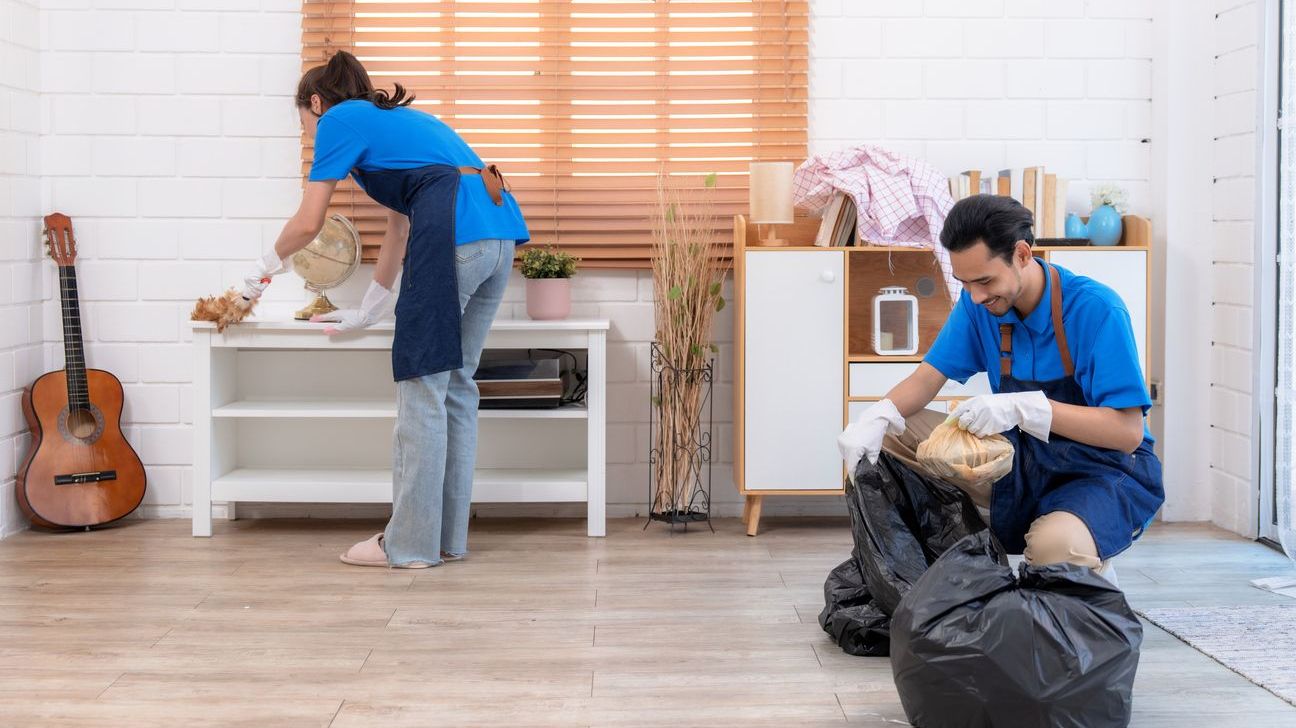Starting a move out cleaning business can be an excellent opportunity for aspiring entrepreneurs seeking a niche in the bustling home services industry. As moving households expand and rental turnover remains high, move out cleaning services stand out as an essential resource for both residential and commercial properties. Before diving in, you’ll need to explore official requirements—such as business licensing, insurance, local zoning ordinances—and put together an organized plan for daily operations and staffing. Keeping in mind city- or county-specific mandates can further ensure compliance and help your new venture thrive.
According to the U.S. Small Business Administration, every new business should verify its structure (LLC, sole proprietorship, etc.), determine any professional license requirements, and obtain the right insurance coverage. Because move out cleaning involves working on clients’ property, liability coverage is especially critical. By reviewing local and state laws, and staying updated with the latest industry best practices, you can build a profitable, sustainable cleaning business that aligns with legal obligations and community standards. Below, we’ll walk through 10 essential tips to help you learn how to start a move out cleaning business—from planning your budget to scheduling employees with modern tools like Shyft.
1. Understanding the Move Out Cleaning Business Landscape
Before launching, you need a thorough understanding of how to start a move out cleaning business in your region. There’s growing demand in many areas—especially near college towns or city centers—to manage turnover for apartments, rental homes, and commercial leases. Here’s what to keep in mind:
- Scope of Services: Move out cleaning typically includes deep-cleaning kitchens, bathrooms, carpets, baseboards, and removing debris. Consider offering add-ons like window cleaning and appliance detailing.
- Competition: Evaluate local cleaning services to see how you can stand out—whether through eco-friendly products, same-day availability, or specialized packages.
- Potential Client Base: Property management companies, landlords, and real estate agencies often need move out cleaning for quick turnovers.
- Local Regulations: Some cities require special disposal methods for chemicals; always check city or county guidelines.
Research also helps you identify prime marketing opportunities. If you serve a region with a high number of rental properties, partnering with landlords or local real estate offices can be vital for a consistent pipeline of clients. Keeping a finger on the pulse of these local regulations and opportunities will shape the right direction for your business.
2. Establishing Business Structure and Legal Requirements
Choosing and registering your legal structure—whether a sole proprietorship, LLC, or corporation—is one of the first big steps. In many states, you may be required to register your business name with the Secretary of State’s office. Check if you need a general business license, plus any specific permits related to using cleaning chemicals or disposing of hazardous materials.
- Business Registration: File with your state or provincial authority. Requirements vary based on location, so visit your official state website for precise information.
- Employer Identification Number (EIN): If you plan to hire staff, obtain an EIN from the relevant federal agency. This number is used for tax filing and payroll.
- Licenses & Permits: Some states require separate sanitation permits for cleaning businesses. Confirm with city or county health departments.
- Insurance: General liability insurance is crucial for move out cleaning services to protect against property damage claims and accidents.
Always consult official websites or legal professionals regarding licensing in your specific area. Many entrepreneurs overlook details such as local environmental regulations for disposing of certain cleaning supplies or the requirement to display permits in a visible location. Staying compliant from day one sets a solid foundation.
3. Crafting a Realistic Budget and Securing Funding
Ensuring you have a clear financial roadmap is essential when you’re learning how to start a move in move out cleaning business. From purchasing equipment to hiring staff, costs can add up quickly. The total initial investment may vary depending on scale:
- Equipment Costs: A commercial-grade vacuum cleaner can range from $200–$600, while professional cleaning solutions and tools might add another $300–$500 initially.
- Vehicle Expenses: If you provide on-site services, consider fuel, vehicle maintenance, and insurance. A reliable company van can run anywhere from $5,000–$15,000 for a used model.
- Liability Insurance: Expect to pay $500–$1,000 or more annually, depending on coverage and location.
- Marketing and Technology: Websites, business cards, scheduling software like Shyft, and local advertising should be factored into your budget.
To help offset startup costs, look for local incentives such as small business grants, enterprise zones, or incubator programs in your city. For example, some counties offer tax credits to new businesses that create jobs in underserved neighborhoods. Keep in mind that these incentives are often time-sensitive and require thorough documentation.
4. Setting Up Effective Business Operations
Move out cleaning is all about efficiency, timeliness, and quality. In this industry, fast turnarounds for rentals are common, meaning you need solid operational workflows. Implementing a scheduling or shift-swapping system can streamline staff coordination, especially during peak move-out seasons (like the end of the month or summer). Consider using a platform like Shyft to manage employee shifts and keep track of who is available for quick turnaround jobs.
- Staffing: Hire trustworthy employees or subcontractors trained in detailed cleaning procedures. This can reduce liability and ensure customer satisfaction.
- Equipment Management: Standardize your cleaning supplies and processes to ensure consistency. Label specialized chemicals and keep them in a safe storage area.
- Scheduling: Use software that allows staff to pick up additional shifts when demand spikes. Efficient scheduling helps you avoid overtime costs and ensures you have enough coverage.
- Quality Control: Implement checklists for each job, focusing on commonly missed areas (like under appliances or closet shelves) to maintain high standards.
Tracking the results of each cleaning job via systematic checklists or quality assurance calls can help you gather customer feedback. This data then informs future staff training or improvements to operational processes. A well-managed operation not only leads to satisfied customers but also enhances your business reputation, fueling referrals and repeat clients.
5. Marketing and Branding Strategies
Marketing is key to attracting homeowners, renters, and property managers. When you’re figuring out how to start a move-out cleaning business successfully, think about branding consistency—online and offline. A polished website, social media presence, and professional uniforms can all convey a trustworthy image.
- Online Presence: Use local SEO strategies, such as claiming your Google Business Profile, to help potential clients find you easily.
- Partnerships: Collaborate with realtors and apartment complexes. Providing a brochure or business card for new tenants can drive additional leads.
- Referral Programs: Offer incentives—like a discount on the next cleaning—to encourage word-of-mouth marketing among satisfied clients.
- Community Involvement: Sponsor local charity events or partner with nonprofits to boost brand visibility and give back to the community.
Because move out cleaning is such a localized service, optimizing for local search engine results should be a priority. Incorporate relevant local keywords and always maintain up-to-date information online. A strong, recognizable brand paired with consistent marketing efforts is the perfect recipe for attracting clients in your region.
6. Hiring the Right Team
Whether you’re a solo entrepreneur handling all jobs initially or plan to hire immediately, the success of your move out cleaning business hinges on your staff. Thorough training in cleaning best practices, safety procedures, and company values is crucial. Additionally, verifying backgrounds and work authorizations ensures reliability and legal compliance.
While building your team, consider these tips:
- Background Checks: Clients often give cleaners access to their property without direct supervision, so employee trustworthiness is vital.
- Fair Compensation: Stay updated on minimum wage requirements in your state and offer competitive rates to attract skilled workers and reduce turnover.
- Onboarding Process: Provide a clear guide to standard operating procedures (SOPs) and checklists so staff know exactly what’s expected on every job.
- Retention Strategies: Show appreciation to stellar employees. Simple gestures and development opportunities go a long way in building a strong culture.
Remember, your team is the face of your move out cleaning business. Their professionalism, punctuality, and attention to detail directly influence the referrals and repeat bookings you’ll receive.
7. Pricing Your Services Competitively
Many new entrepreneurs wrestle with how to set fair yet profitable prices. Factors like property size, level of dirtiness, and the region’s cost of living play a role in determining your rates. One effective approach is to charge per square foot for larger spaces but offer flat rates for studio apartments or single-bedroom units.
- Research Local Market: Look at the average rates from competitors, factoring in overhead costs and labor time.
- Include All Costs: Account for cleaning supplies, transportation expenses, employee wages, and insurance premiums when setting baseline prices.
- Provide Optional Add-Ons: For carpets, heavy stain removal, or inside appliance cleaning, charge a little extra for specialized effort.
- Offer Package Deals: A discount for bundling multiple services (e.g., move in and move out cleaning) can entice repeat business.
Market value fluctuates, so plan for slight price adjustments each year to reflect rising labor and supply costs. Clear, upfront pricing also fosters trust with potential clients—nobody likes hidden charges. Ultimately, a transparent pricing strategy will set you apart and keep your bookings strong.
8. Equipment and Eco-Friendly Practices
As you grow your move out cleaning business, investing in quality equipment pays off in time savings and better results. A reliable vacuum, efficient scrubbing tools, and specialized cleaning agents for tough stains are basic essentials. Additionally, many clients now prefer environmentally friendly, non-toxic solutions, especially for families with children or pets. Incorporating “green” cleaning services can give your business a market edge.
When choosing eco-friendly products, check whether they meet regional standards and are recognized by reputable agencies. Properly labeled, sustainable cleaning solutions can help reduce exposure to harmful chemicals and set you apart from traditional cleaning services. Plus, it opens doors to clients who prioritize environmental responsibility.
9. Compliance, Local Ordinances, and Incentives
Each city or county may impose specific rules you need to follow, such as obtaining a local business license or paying an annual renewal fee. In some jurisdictions, disposal of certain chemical-based solutions must follow strict guidelines. Violations can lead to fines or permit revocations. Always confirm with your local city or county clerk’s office to see which fees or filings apply.
On the other hand, you might uncover helpful resources in your area. Certain municipalities offer grants to small service-oriented businesses to encourage job creation. Others have enterprise zone benefits where businesses in designated neighborhoods can enjoy tax breaks. Keep an eye on deadlines and the necessary documentation if you plan to apply for these programs. Accurate bookkeeping, proper licensing, and a solid business plan can strengthen your application for government-backed incentives.
10. Maintaining Growth and Customer Satisfaction
Once you’ve learned how to start a move-out cleaning business, ongoing success requires continually adapting to customer feedback and market changes. Seek testimonials and reviews after each completed job; positive feedback boosts your credibility, while constructive criticism helps fine-tune your service. You can also maintain a rolling list of “next steps” for your business—like adding new cleaning technologies or refining employee training.
- Customer Reviews: Encourage online reviews on platforms like Google or local business directories. High ratings can drive more organic leads.
- Up-Selling & Cross-Selling: Introduce additional cleaning packages (e.g., post-construction cleaning) to existing clients.
- Repeat Business: Offer loyalty incentives for landlords or property managers who frequently schedule move out cleanings.
- Scaling Up: If business is booming, hire more staff or invest in better equipment. Update your scheduling software to handle increasing demand seamlessly.
Remember, expansion should be intentional and supported by consistent revenue, a skilled workforce, and reliable tools. Achieving this balance leads to sustainable growth, keeps your reputation positive, and helps you remain competitive in your market.
Summary
Launching a move in move out cleaning business involves balancing multiple elements—legal setup, scheduling, marketing, pricing, and customer satisfaction. By understanding your local market, securing the right licenses, and investing in tools that streamline operations (like Shyft for scheduling), you can enter this niche ready to handle both everyday challenges and the surges in demand that define the industry. Consistency, quality assurance, and a keen eye on evolving regulations are critical to ensuring your move out cleaning business stays on track for long-term success.
Conclusion
Now that you’ve explored how to start a move out cleaning business, it’s time to put your plan into motion. Focus on the fundamentals: thorough research of local ordinances, forming a legal structure, and obtaining insurance. Next, build a small but strong team committed to high standards of cleaning quality. Remember to monitor your finances closely, from initial equipment purchases to ongoing marketing expenses, and always look out for local incentives that can alleviate some of the costs.
Once you’re operational, maintaining a balance between excellent service, efficient scheduling, and consistent branding will drive new business your way. Leverage modern tools to stay ahead of the competition, refine your cleaning process, and ensure that each move out job is handled with the utmost professionalism and care.
Finally, be prepared to adapt to changing conditions. City regulations, customer preferences, or new cleaning technologies may affect your processes. Staying flexible, innovative, and committed to quality is the surefire route to sustained success in the move out cleaning industry.
FAQ
Do I need a special cleaning license to start a move out cleaning business?
Most areas require a general business license, but some cities or counties might mandate additional permits if you use specialized cleaning products or handle hazardous materials. Always check with your local clerk’s office to confirm specific requirements.
How much should I charge for a move out cleaning service?
Your pricing depends on factors like property size, the level of cleaning needed, and local market rates. Many businesses use a per-square-foot rate or flat fee for smaller units. Don’t forget to factor in labor, supplies, insurance, and travel costs.
Can I run a move out cleaning business by myself?
Yes, many entrepreneurs start solo, especially for smaller properties. However, hiring additional staff or subcontractors becomes crucial once you handle multiple or larger cleaning jobs simultaneously. Effective scheduling software will be key as you scale.
Are eco-friendly cleaning products necessary?
They’re not mandated in most areas, but offering environmentally conscious cleaning can set you apart from the competition and appeal to customers who prioritize health and sustainability. Some jurisdictions also provide incentives for “green” businesses.
How do I find local grants or incentives for my new business?
Contact your local Small Business Development Center (SBDC) or city economic development office. They can direct you to available grants, low-interest loans, or enterprise zone benefits tailored for small businesses in your region.
Disclaimer: The information provided here is based on general industry guidelines and official sources as of this writing. Rules and regulations may vary by location and are subject to change. Always consult with legal, financial, or tax professionals for advice specific to your situation.












